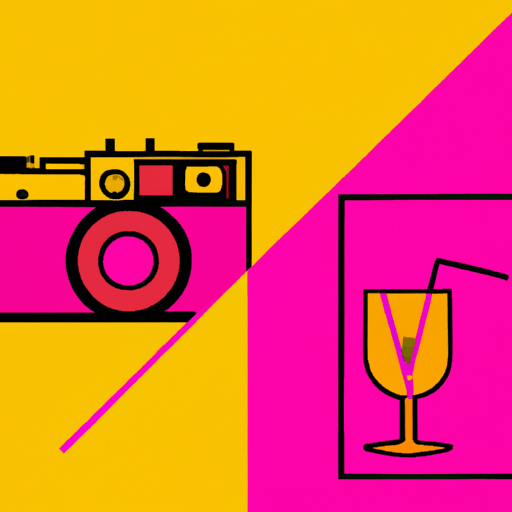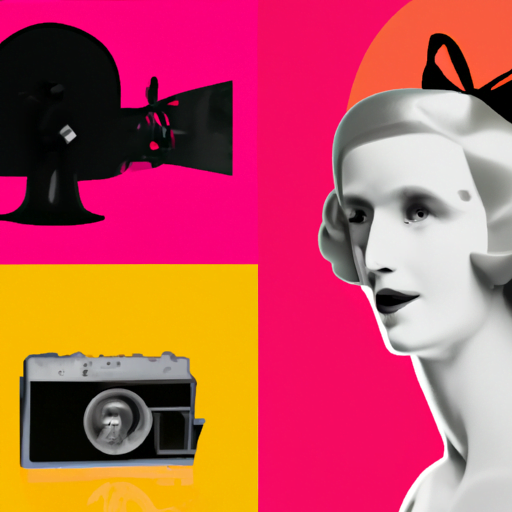
-
Table of Contents
The Influence of Retro Futurism on Modern Design

Retro futurism is a design aesthetic that combines elements of the past with futuristic concepts, creating a unique and captivating visual style. It emerged in the mid-20th century and has since influenced various fields, including architecture, fashion, and product design. This article explores the impact of retro futurism on modern design, examining its origins, key characteristics, and examples of its application in contemporary design.
Origins of Retro Futurism
The roots of retro futurism can be traced back to the early 20th century, when technological advancements and scientific discoveries sparked a fascination with the future. This period, known as the “Machine Age,” saw the rise of Art Deco, a design style characterized by sleek lines, geometric shapes, and luxurious materials. Art Deco’s emphasis on progress and modernity laid the foundation for retro futurism.
However, it was not until the 1940s and 1950s that retro futurism truly took shape. This era, often referred to as the “Atomic Age” or the “Space Age,” was marked by significant scientific and technological advancements, such as the development of nuclear power and the exploration of outer space. These breakthroughs fueled people’s imaginations and inspired a vision of a futuristic world.
Key Characteristics of Retro Futurism
Retro futurism is characterized by a distinct set of design elements that combine the aesthetics of the past with futuristic concepts. Some of the key characteristics include:
- Sleek and streamlined forms: Retro futurist designs often feature smooth, curved lines and aerodynamic shapes, reminiscent of the streamlined designs of the 1930s and 1940s.
- Bright and bold colors: Vibrant hues, such as electric blue, neon pink, and metallic silver, are commonly used in retro futurist designs to create a sense of energy and excitement.
- Use of new materials: Retro futurism embraces the use of innovative materials, such as plastics and metals, to create futuristic-looking objects.
- References to technology: Retro futurist designs often incorporate imagery and symbols associated with technology, such as rockets, robots, and computer circuitry.
- Nostalgic references: Despite its futuristic nature, retro futurism often includes nostalgic references to the past, evoking a sense of nostalgia and familiarity.
Examples of Retro Futurism in Modern Design
Retro futurism has had a significant influence on modern design, with many designers and artists incorporating its elements into their work. Here are some notable examples:
1. The Apple Watch
The Apple Watch, released in 2015, features a sleek and minimalist design that draws inspiration from retro futurism. Its curved edges, smooth surfaces, and futuristic interface reflect the aesthetic principles of the movement. Additionally, the watch’s digital crown, which resembles a traditional watch crown, adds a nostalgic touch to the overall design.
2. The Tesla Cybertruck
The Tesla Cybertruck, unveiled in 2019, is a prime example of retro futurism in automotive design. Its angular and geometric shape, reminiscent of 1980s concept cars, gives it a futuristic appearance. The use of stainless steel as the primary material further enhances its futuristic aesthetic.
3. The “Blade Runner” Film Series
The “Blade Runner” film series, directed by Ridley Scott, is renowned for its retro futurist visual style. The films depict a dystopian future where technology and society have evolved in a way that combines futuristic elements with a gritty, noir atmosphere. The use of neon lights, futuristic architecture, and retro-inspired fashion creates a visually stunning and immersive world.
The Impact of Retro Futurism on Modern Design
Retro futurism has had a profound impact on modern design, influencing various industries and shaping the way we perceive the future. Here are some key ways in which retro futurism has influenced modern design:
- Inspiration for designers: Retro futurism serves as a rich source of inspiration for designers, providing them with a unique aesthetic language to draw from. By combining elements of the past with futuristic concepts, designers can create visually striking and thought-provoking designs.
- Revival of vintage aesthetics: Retro futurism has sparked a revival of vintage aesthetics in modern design. The use of bold colors, geometric shapes, and nostalgic references has become increasingly popular, as designers seek to evoke a sense of nostalgia and create a connection between the past and the future.
- Creating a sense of optimism: Retro futurism often conveys a sense of optimism about the future, presenting a vision of a world where technology has advanced and improved our lives. This optimistic outlook can inspire people and instill a sense of hope for what the future holds.
- Breaking away from minimalism: Retro futurism offers a departure from the minimalist design trends that have dominated in recent years. Its bold and vibrant aesthetic challenges the notion that simplicity is the only path to modernity, encouraging designers to explore new possibilities and push boundaries.
Conclusion
Retro futurism has emerged as a powerful design aesthetic that combines elements of the past with futuristic concepts. Its influence can be seen in various fields, from technology and fashion to architecture and film. By embracing the aesthetics of retro futurism, designers can create visually captivating and thought-provoking designs that challenge our perceptions of the future. Whether it’s the sleek design of the Apple Watch or the dystopian world of “Blade Runner,” retro futurism continues to shape modern design and inspire new possibilities.
